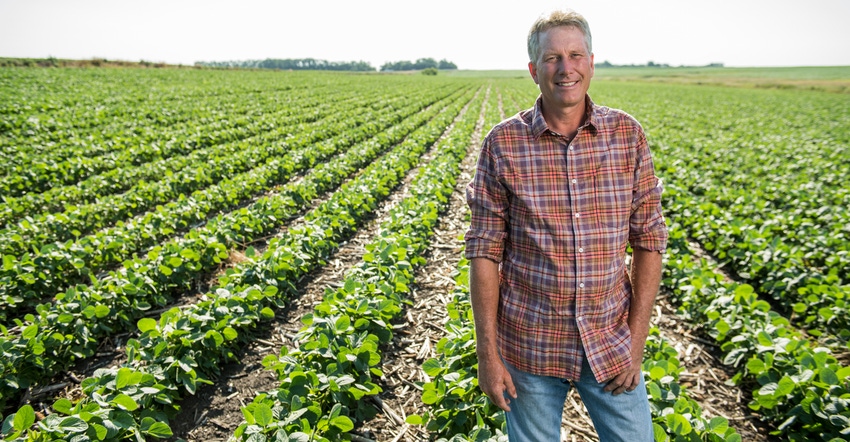
The stakes are high in today’s protein competition. For many beef producers, it feels like beef vs. the Impossible Burger — or any array of plant-based imitation meats. It’s not hard to imagine that competition trickling down to the farm, in the form of beef producers vs. soybean producers.
Globally, however, that’s not the case, and a group of farmers with the United Soybean Board and the USA Poultry and Egg Export Council says a rising global protein tide lifts all U.S. commodity boats, especially when they champion global nutrition.
“All of us have the same goal: to move U.S. protein globally,” says Todd Hanten, a Goodwin, S.D., farmer and USB director.
Looking around the world, it’s clear not all parents have the luxury of choosing the protein they put on their kids’ plates every day. “Sometimes the best option is a plant protein. Sometimes it’s fish or poultry or pork,” says Polly Ruhland, USB CEO and former CEO of the beef checkoff organization.
Ruhland says she’s grown concerned as she’s seen her former cattle producers and her new soybean farmers start to take shots at each other. Hanten says it doesn’t have to be that way. He’s had friends and neighbors who’ve grown defensive about plant-based meat alternatives and admits he was, too, at first.
“But I started to draw on what I’ve seen around the world,” he says. “People demand different products, and I produce different products. So do my neighbors.
“But if we can increase the use of our U.S. protein products around the world — whether it’s plant- or animal-based — we’ll all prosper and do better. There’s going to be a big demand out there. As U.S. producers, we can step up and fill the demand.”
Expanding markets
Just look at India, says Greg Tyler, senior vice president of marketing for the USA Poultry and Egg Export Council, which is currently working with the U.S. Soybean Export Council to send protein to India. He predicts India will surpass China in protein demand over the next five to 10 years. Currently, their protein habits are about 10% of those of the Chinese.
“Cheap protein sources are vital to growing economies,” Tyler says, adding that cultural sensitivities in India mean no beef, and in some places, no pork. Many Indians are vegetarians. Some are “chicketarians,” which means they’ll try poultry.
In a foreign country, though, that means letting the locals know that U.S. protein isn’t trying to replace their local products. Tyler says they’re not coming in with U.S.-branded products, and they want to avoid a situation that would create high tariffs on U.S. products.
“We want to help grow their overall economy and give consumers more of a choice,” he explains. “We’re trying to increase protein consumption, regardless of the source. So, we want to not only increase poultry exports but also help the local poultry industry to grow.”
Tyler says the global poultry production sector will be a $350 billion market in the next five years, and the U.S. poultry industry hopes to grow by 10% in the next two years. The inherent message, of course, is that those chickens, turkeys and assorted poultry eat a lot of grain.
“We know protein is absolutely essential in global nutrition,” Ruhland says. “And if we can grow the pie, everybody wins.”
Straddling the fence
As both a soybean producer and a cattleman, Hanten is used to straddling the fence on protein choices, both domestic and abroad. Beef burgers, soy-based burgers and pea-based burgers all come into play, but at the end of the day, he points to consumer demand.
“We want to do what consumers want,” Hanten says. “We’re going to try to provide whatever products we can to satisfy them.”
Farmers of both plants and animals have to look globally, he says. As a soybean farmer and a cattleman, he can supply two of the three kinds of protein — but he’s sympathetic to his grass-fed brethren.
“Of course, that’s going to be a tougher pill to swallow for those guys, because they don’t raise soybeans or peas at this time,” Hanten acknowledges. But he believes there will always be meat demand, either because people are venturing into animal protein with cheaper cuts or because they’re improving their meat consumption with better cuts as their economy improves.
“We’re still going to raise beef production and pounds used by providing better cuts to the people that can afford that,” Hanten says. “And we can move those cheaper cuts to economies in emerging markets that weren’t able to afford them before.
“Globally, we’ll still increase beef demand even as we’re satisfying consumers that want plant-based protein, also,” he concludes.
About the Author(s)
You May Also Like






